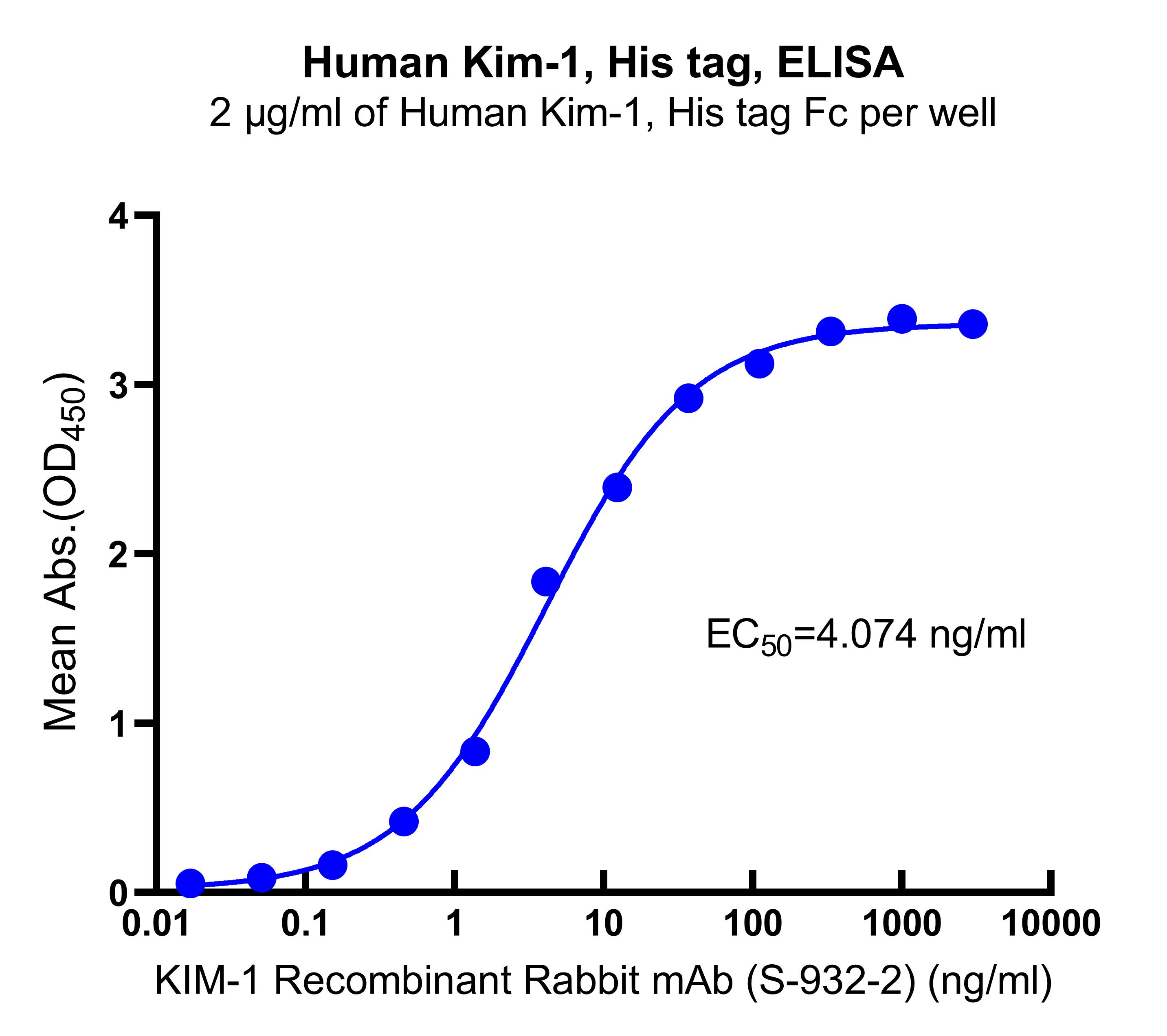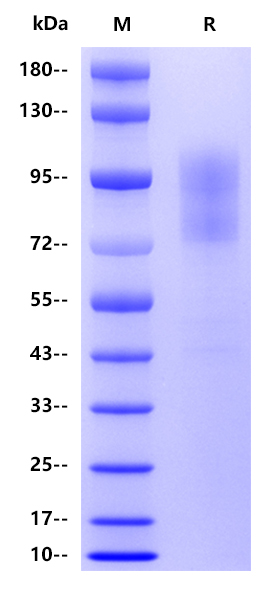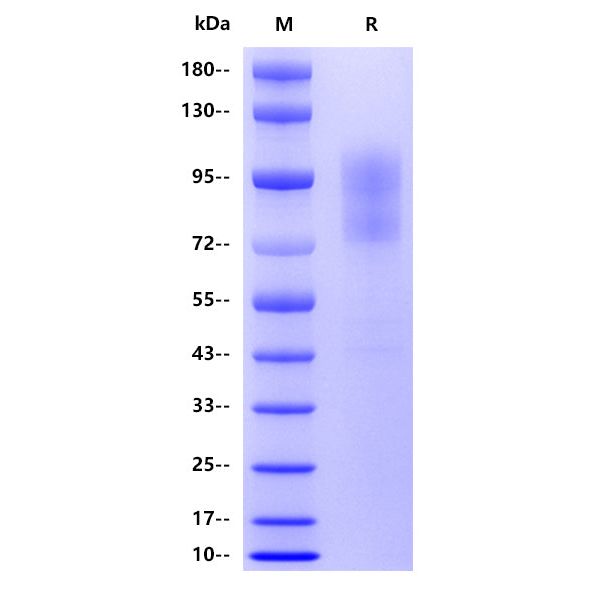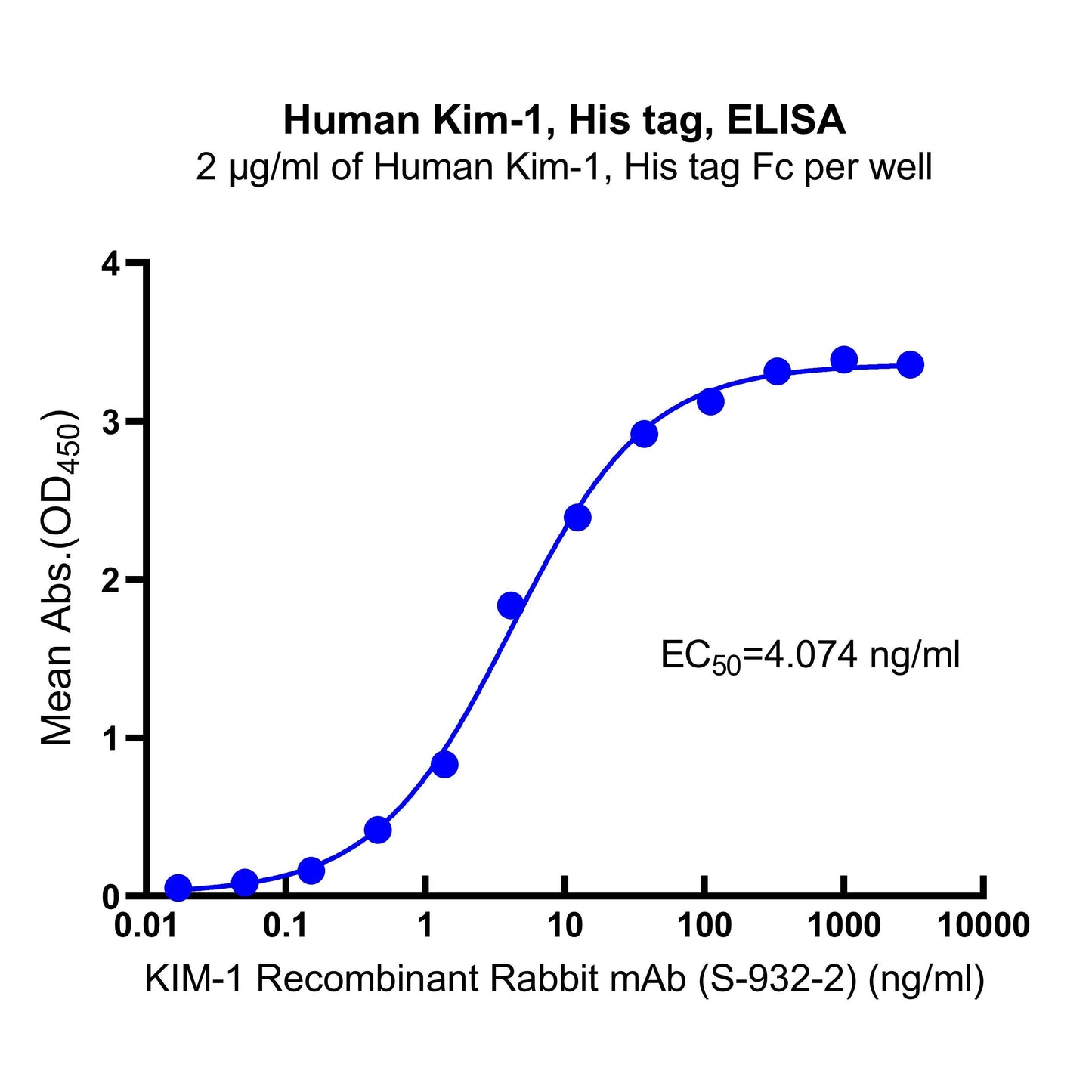Immobilized Human Kim-1, His tag at 2 μg/mL (50 μL/well) can bind KIM-1 Recombinant Rabbit mAb (S-932-2) (Cat. No. S0B0604) with EC50 of 3.341-4.967 ng/ ml.
Product Details
Product Details
Product Specification
| Species | Human |
| Synonyms | Kidney injury molecule 1, T-cell immunoglobulin and mucin domain-containing protein 1 (TIMD-1), T-cell immunoglobulin mucin receptor 1 (TIM; TIM-1), T-cell membrane protein 1, CD365, HAVCR1 |
| Accession | Q96D42 |
| Amino Acid Sequence | Protein sequence(Q96D42, Ser21-Gly295, with C-10*His) SVKVGGEAGPSVTLPCHYSGAVTSMCWNRGSCSLFTCQNGIVWTNGTHVTYRKDTRYKLLGDLSRRDVSLTIENTAVSDSGVYCCRVEHRGWFNDMKITVSLEIVPPKVTTTPIVTTVPTVTTVRTSTTVPTTTTVPMTTVPTTTVPTTMSIPTTTTVLTTMTVSTTTSVPTTTSIPTTTSVPVTTTVSTFVPPMPLPRQNHEPVATSPSSPQPAETHPTTLQGAIRREPTSSPLYSYTTDGNDTVTESSDGLWNNNQTQLFLEHSLLTANTTKGGGGGSHHHHHHHHHH |
| Expression System | HEK293 |
| Molecular Weight | Theoretical:31.1kDa Actual: 39, 75-110kDa |
| Purity | >95% by SDS-PAGE |
| Endotoxin | <1EU/μg |
| Conjugation | Unconjugated |
| Tag | His Tag |
| Physical Appearance | Lyophilized Powder |
| Storage Buffer | Lyophilized from a 0.2 μm filtered solution of 0.2M PBS, pH7.4. |
| Reconstitution | Reconstitute no more than 1 mg/mL according to the size in deionized water after rapid centrifugation. |
| Stability & Storage | 12 months from date of receipt, -20 to -70 °C as supplied. 6 months, -20 to -70 °C under sterile conditions after reconstitution. 1 week, 2 to 8 °C under sterile conditions after reconstitution. Please avoid repeated freeze-thaw cycles. |
Background
KIM-1 (Kidney Injury Molecule -1) is a protein the most highly upregulated in injured kidneys by various types of insults. Its upregulation during renal injury has been found in the kidneys of the vertebrates such as Zebrafish and humans. A soluble form of human KIM-1 can be detected in the urine of patients with ATN and may serve as a useful biomarker for renal proximal tubule injury facilitating the early diagnosis of the disease and serving as a diagnostic discriminator.
Picture
Picture
Bioactivity

SDS-PAGE

2μg(R: reducing conditions)




